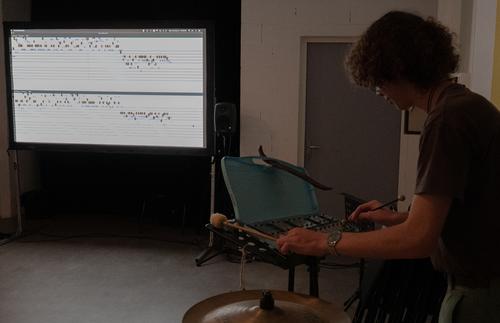
Rodolphe Bourotte talks about Comma
Comma represents a different experience for everyone, regardless of musical background. Doing this, amateur and professional musicians are on an equal footing, each having just as much to do to achieve the concert result.
Some 20th-century music has focused on the production of sound masses, based on processes that are more statistical than precisely written. This approach interests Rodolphe, because it can generate a new form of musical practice, of collective creation, which illustrates our fascination for the organization of natural systems. We'll be moving more towards phenomena evoking the waking up of birds, than towards productions derived from the rhythmic organizational constraints of symphonic music.
Comma takes a fresh look at several aspects of musical production:
- Using musical notation that reflects the idea of unfixed time, with its elastic properties
- Integrating improvisation into the compositional framework
- The symphony is now a mass of sound, a sum of isolated contributions that are statistically derived
- Spatialization: possibility of managing musicians who are far away or out of sight, in fragmented arrangements
Rodolphe Bourotte (born 1971 in Abidjan, Ivory Coast) is a composer and researcher and has been writing and improvising electroacoustic and instrumental music since 1998.
He studied composition with Allain Gaussin, Jean-Yves Bosseur, Jean Balissat, Paul Méfano, and electroacoustic composition at Les Ateliers UPICn, and was a musical assistant at Centre de Création Musicale Iannis Xenakis. He contributed his music to: installation, object theater, dance, and, well, music. Founding member of the CLSI (Centre pour la Libération du Son et de l'Image), with whom they have created a lot of music, by Olga Krashenko, Gerard Pape, Karlheinz Stockhausen, Kasper Toeplitz among others.
Rodolphe developed various programs linking graphics and sound, notably for real-time generated scores or picture-driven probability sequences. His music is based on the assumption that we should, us humans, make the effort to create things that cannot be modelled by the computer.